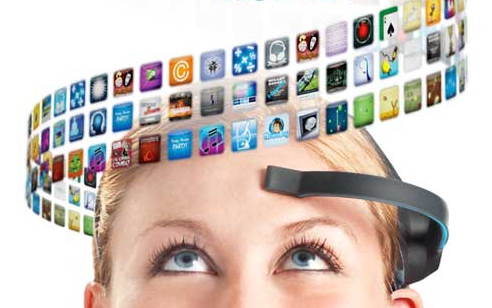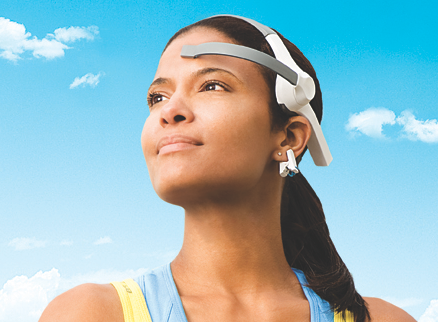CES 2013: Where is Next-Gen Brain Wave Technology Headed?
January 11, 2013
NeuroSky and InteraXon both wowed CES this week with their mind controlled devices and apps, but it will be a while before brain wave technology allows Jedi-like mastery of our electronic world. And, while the technology is in its infancy right now, current systems are being used to familiarize users with the concepts and pave the way for more advanced designs. Despite their similarities, however, the companies are following very different developmental roadmaps.
 Both companies have developed simple, compact designs utilizing a minimal amount of sensors to keep costs down and lure users that might otherwise be intimidated by the bulky laboratory headsets needed for in-depth brain wave analysis. Utilizing only one sensor, they are capable of determining the user’s level of attention and focus. NeuroSky, for example, used its technology to help prepare the U.S. archery team for the Olympics with great success.
Both companies have developed simple, compact designs utilizing a minimal amount of sensors to keep costs down and lure users that might otherwise be intimidated by the bulky laboratory headsets needed for in-depth brain wave analysis. Utilizing only one sensor, they are capable of determining the user’s level of attention and focus. NeuroSky, for example, used its technology to help prepare the U.S. archery team for the Olympics with great success.
This makes brain wave technology a very attractive possibility for emotion-based content discovery and evaluation. The systems also hold great promise for remote control devices and video game technology, as both companies have shown at CES. Despite their similarities, however, their technology and perspectives are very different.
 NeuroSky was born for gaming, and has helped established over 100 different apps using its hardware. One of these, a crowd pleaser all week, is the brain-controlled helicopter that rises proportionally to the user’s relaxation and focus. The design is based on a single sensor with a grounding strap that attaches to the earlobe. The single channel, active electrode design was selected specifically to encourage industry adoption and it is low cost, making it especially attractive to industries with thin profit margins, like toy companies.
NeuroSky was born for gaming, and has helped established over 100 different apps using its hardware. One of these, a crowd pleaser all week, is the brain-controlled helicopter that rises proportionally to the user’s relaxation and focus. The design is based on a single sensor with a grounding strap that attaches to the earlobe. The single channel, active electrode design was selected specifically to encourage industry adoption and it is low cost, making it especially attractive to industries with thin profit margins, like toy companies.
The NeuroSky system connects to most mobile and PC platforms. It communicates with the host device by sending a library of analyzed data, with its own decoding dictionary, so that no signal processing is needed on the user-end. Attention is measured by monitoring the miniscule voltages on the subject’s forehead, performing a frequency analysis and comparing it to both the user’s baseline values, captured when the headset is first put on, and known patterns of brainwave activities.
 Like Neurosky, InteraXon’s Muse headband also connects to most mobile platforms and computers, but it provides all captured data in raw form. This offers users more complete control of the information at the cost of moving the majority of signal processing to the host device.
Like Neurosky, InteraXon’s Muse headband also connects to most mobile platforms and computers, but it provides all captured data in raw form. This offers users more complete control of the information at the cost of moving the majority of signal processing to the host device.
The design includes four sensors, compared to NeuroSky’s one, and built-in accelerometers to sense head movement. The four channels are paramount though, as they allow for bilateral differentiation of signals, meaning Muse can differentiate between positive and negative stimuli.
InteraXon is, as one representative put it, focused on, “technology for the betterment of life.” They are an academic company with close ties to the University of Toronto and an emphasis on education and health technologies.

No Comments Yet
You can be the first to comment!
Leave a comment
You must be logged in to post a comment.